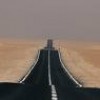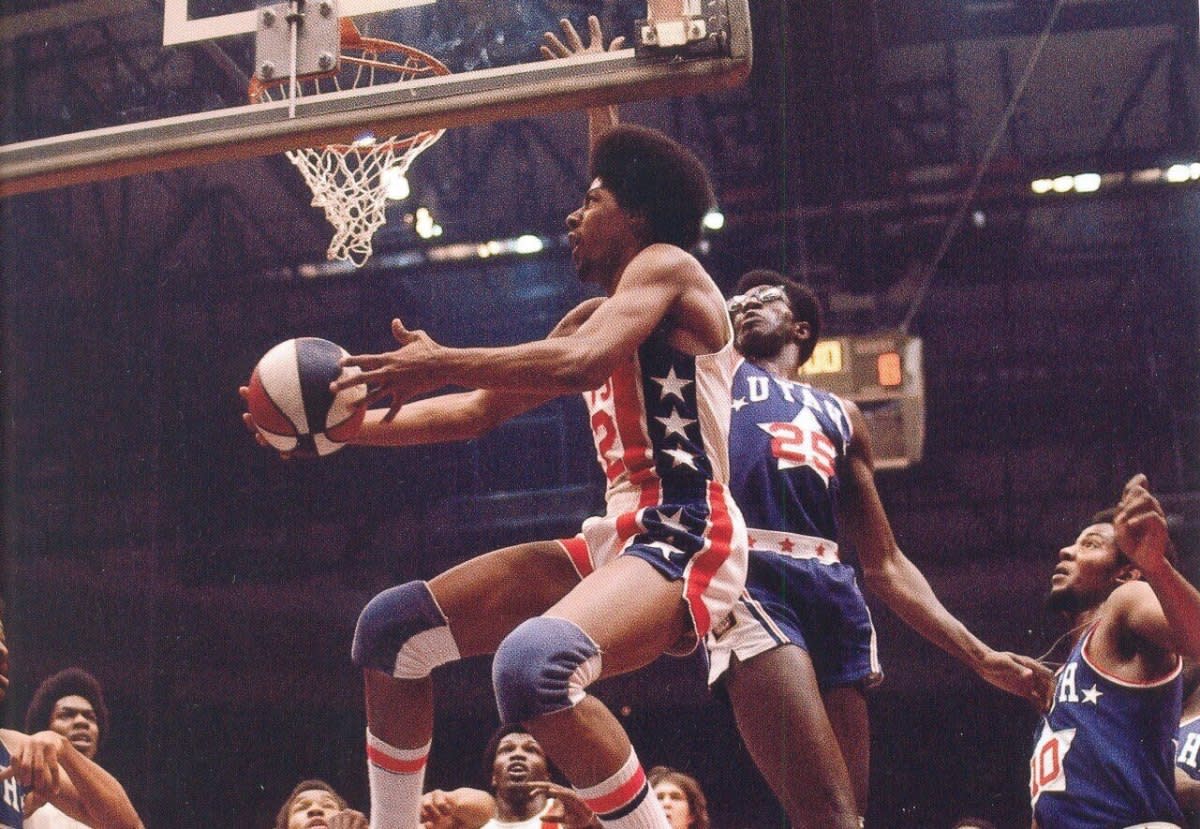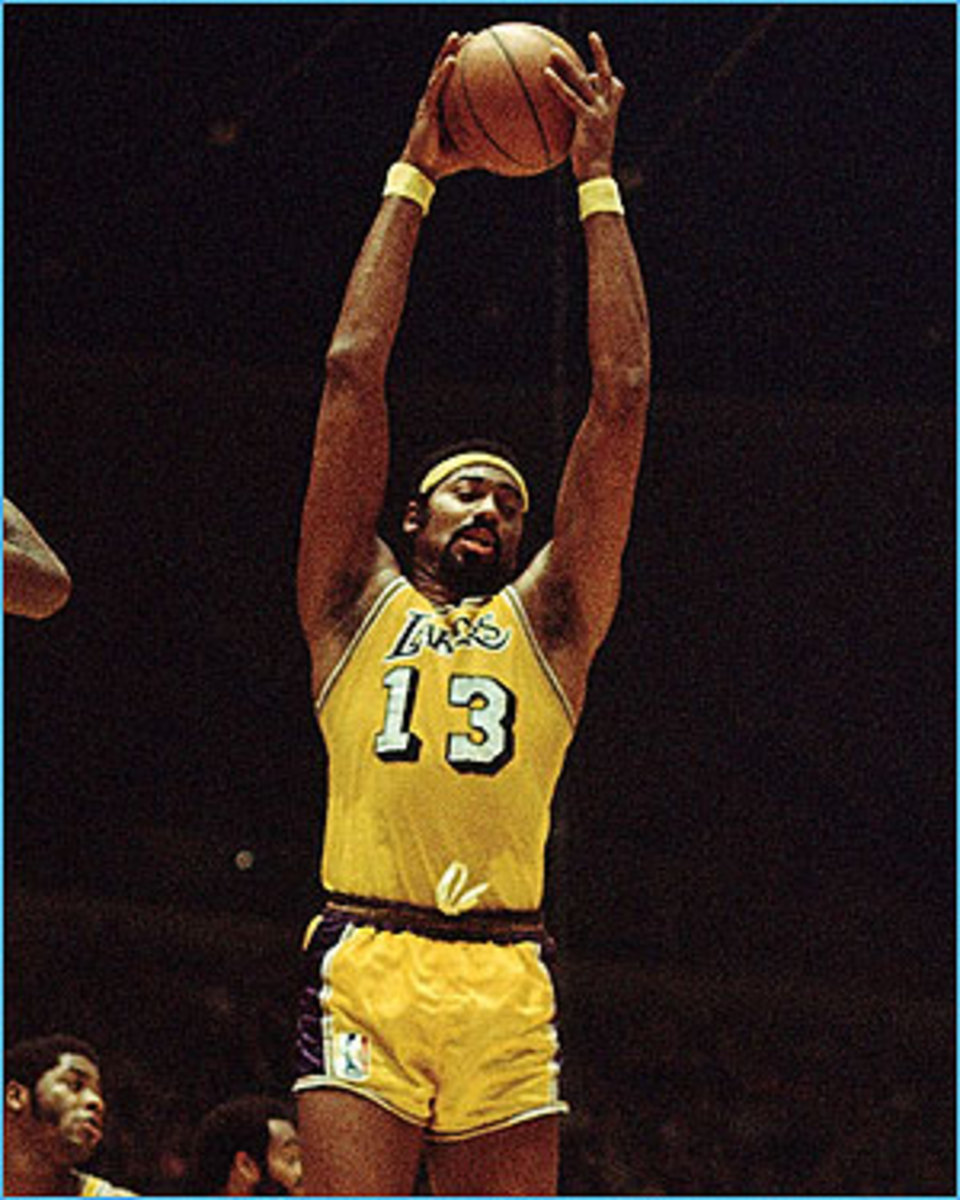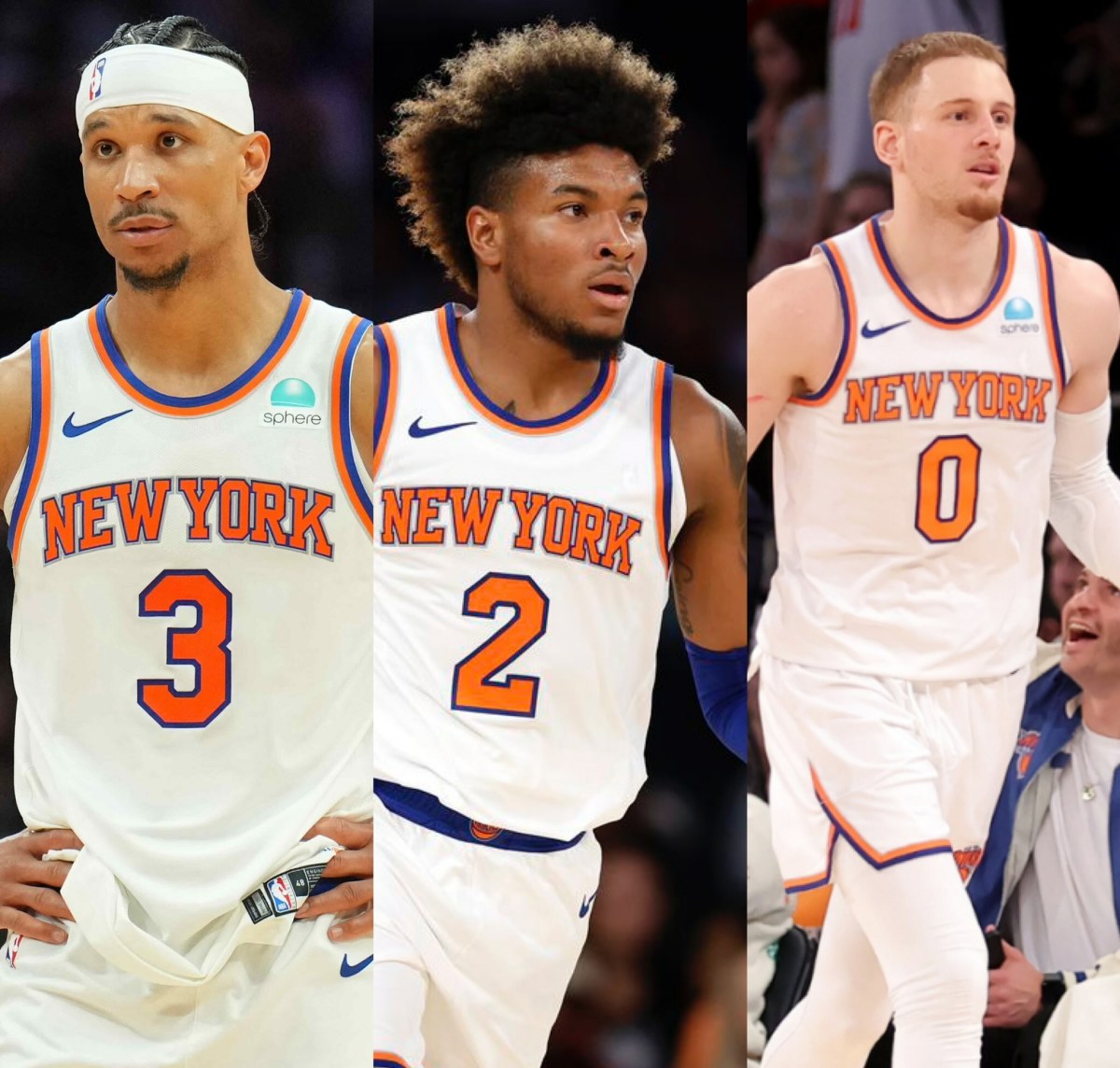How Reggie Miller Saved Indianapolis
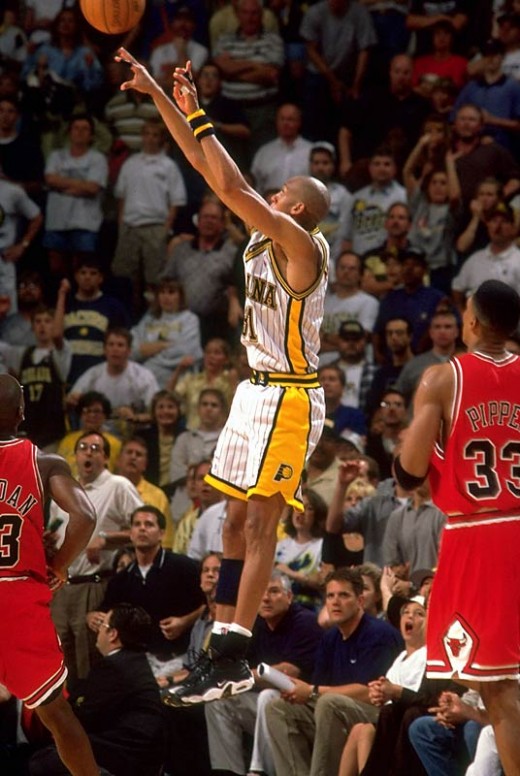
I’ve lived almost my entire life on the south side of Indianapolis. Sure, I went away to college and have spent some time on the east side of town, but the vast majority of my life experiences have occurred south of the National Road in my state‘s capital. Over the years, Indy has changed dramatically from the decaying Nap Town that the Bottle Rockets sang about to its current status as the amateur sports capital of the world. The downtown area (albeit tiny) continues to undergo a seemingly never ending process of upgrades and improvements. I have seen four stadiums built, two torn down, and one abandoned. The Indy 500 has gone from the Greatest Spectacle in Racing (and far and away the most important event in the city) to a half-time show for NASCAR (and an aside for our sports fans while the Colts and Pacers are enjoying their off-seasons). We’ve gotten a new zoo, a new state museum, a new downtown mall, and a new airport. The city has transformed itself into a nice little oasis situated at the crossroads of the nation. Through it all, there has been one constant: the Indiana Pacers.
It is definitely difficult for those who are new to the city or are too young to remember otherwise what life was like here before the Colts came to town. Back then we had three professional sports franchises: the Indians, Checkers, and Pacers. While the Indians and Checkers were both minor league clubs, they played at the highest levels and enjoyed a fair amount of success. The Tribe’s domination of AAA began in 1978 and ran through the entirety of the ’80s, winning five American Association championships and playing for a sixth. We witnessed the likes of Larry Walker, Randy Johnson, and even a few of the famed “Big Red Machine” members enjoying stays in the home clubhouse at Bush Stadium. Our hockey franchise (the Checkers) was also in the thick of their league’s title chase each year. As the farm club of the four-time Stanley Cup Champion New York Islanders, the Checkers and their fans witnessed many great players come through town, allowing the city to lay claim to two CHL Adams Cup Trophies.
Both of these franchises had a face. Each had that one player that personified his team and that the fans closely identified with. For the Checkers, it was center Ron Handy. He was a force to be reckoned with in the IHL, scoring over fifty goals twice and registering over 100 points three times. That said, over the course of his twenty year career he saw action in just 14 NHL games. The Indians had the crowd favorite RRRRRRRRRRRazor Shines. Shines came to Indy in 1984 and would remain a fixture here until 1993 (he did spend 42 games with Buffalo in 1990). During that time, he played first and third, pitched, and even acted as a player/manager during his final season. During his 15 year career, he played in 68 MLB games over four different stints with the Expos (Razor holds the MLB record for most games played by a non-pitcher without scoring a run).
Razor and Handy were more than mere sports figures. They were living, breathing reflections of our city’s own ineptitude; AAAA players, who try as they might, just weren’t quite ready for prime time. It wasn’t for a lack of effort or desire. Both men performed admirably at their assigned level and were beloved by those they played for and with They just didn’t have what it took to make the big time, to gain that national recognition and respect. Maybe that’s why we loved them so much. Deep down, we knew their shortcomings were collectively our own. We were above average for a cow town, but all that was good for was a shot at an Adams Cup. We wanted more, but felt/knew we didn’t deserve it (or, at the very least, weren’t ready for it).
We also had one other franchise in town: the NBA’s Indiana Pacers. Well, the ABA’s Indiana Pacers. You see, even our big league club came with some serious baggage. While the ABA brought us such great innovations as the three-point line and the tri-colored Money Ball, it wasn’t exactly an equitable product when compared to its elder brother. Only four of its teams would make the leap to the National Basketball Association in 1976 (the Pacers, Spurs, Nuggets, and Nets). While they each had varying degrees of success, it would be 1999 before one would manage to win a championship. Tim Duncan would help bring four titles to San Antonio between ’99 and ’07, two as a member of the Twin Towers and two without The Admiral. This finally put to bed any and all talk of the ABA teams’ status as weak-sisters.
The Pacers? Well, let’s just say that they didn’t start off by setting the world on fire. They had four losing seasons followed by a first-round playoff exit. Six more losing seasons would then be followed by four more first round defeats. They managed to compile a 422-644 (.396) record over their first 13 NBA seasons. You would think that this kind of futility would allow them to stockpile some serious talent. Not so much. The Pacers irrefutably proved the old saying about the draft being an inexact science. They made many egregious errors. Even when they got it right, they got it wrong. Examples would be the selections of first round picks Clark Kellogg (8th) and Steve Stipanovich (2nd). Both were outstanding players and professionals; however, both would be forced into early retirement due to knee issues (Kellogg after three years, Stipo after five). There were a few success stories sprinkled in over the years (Herb Williams, Chuck “The Rifleman” Person), but, for the most part, the Pacers were a bad team that were not getting any better.
It’s hard in today’s uber-sports-crazed nation to understand how much negative energy surrounded this ball club. During the heyday of the ABA, the Pacers were a force, winning three championships. One could even say that they were a model organization. Even though it was in an inferior league, the fan base had grown accustomed to winning. This IS Indiana, remember, the home of real basketball. The Pacers’ fall from grace coincided with the real emergence of Bobby Knight’s powerhouse Indiana Hoosiers teams. It was a hard sale to get people to spend much money on a franchise that couldn’t seem to get out of its own way when all they had to do was flip on the TV to see the well-oiled machine from Bloomington making the whole state proud. It was common place for Market Square Arena to “drop the curtain” for home games (an actual curtain painted to look identical to the back walls of the stadium which, when dropped, which would give the illusion that the less than half filled stadium was at capacity) Things were so bleak at one point that former coach and future Hall of Famer Bobby “Slick” Leonard and his wife had to host a “Save the Pacers Telethon” on local television.. Luckily, they were able to sell off 2,000 season tickets, raising the necessary $30,000 needed to keep the team in Indianapolis. Like Razor Shines and Ron Handy, the Pacers were yet another affirmation that we weren’t exactly ready to be considered a major market or even a real sports town.
Under Mayors Richard Lugar and William Hudnut, Indianapolis decided it was time to reinvent itself. Plans were laid and funding was procured to build the Hoosier Dome. This was a major leap of faith by the tax payers and city planners as we had no football team to put in it (originally it was hoped that the building could serve as a multi-purpose facility for the fabled MLB Indianapolis Arrows baseball team - another time perhaps). We bought into the famous line from Field of Dreams years before the movie was even penned, and as you probably already know, it worked. The Colts left Baltimore to set up shop in Nap Town. This was a huge coup for the city on many levels, but none larger than the fact that being an NFL city offered instant national credibility. It was an exciting time, but it couldn’t sustain itself. Indianapolis was not, by its nature, a football town. Kids grew up dreaming of being the next Larry Legend or Isiah Thomas, not Ray Nitschke or Earl Campbell. It was a foreign game to the populace as a whole. The fact the team was horrendous didn’t help matters either. Until the arrival of Eric Dickerson, they amassed a record of 12-36. They only made the playoffs once in their first 13 years and that was in large part thanks to our scabs being an above average group during the strike year. The town was still there for the taking if the Pacers could only find the right leader.
Then it happened. With the 11th pick in the 1987 NBA draft, the Indiana Pacers selected Reggie Miller from the University of California, Los Angeles. Ironically, this infuriated most Pacers fans. It’s almost like we subconsciously knew that this was the beginning of a major change, something that would be uncomfortable, and therefore must be fought. The fans had already decided that our first round pick would be used to select Steve Alford. He was a native son that had just led the Hoosiers to the NCAA National Championship. On top of that, he was a former Indiana High School Mr. Basketball. To most, it seemed like a slam dunk. Donnie Walsh, however, decided to use his head instead of the fans’ hearts to draft a skinny little trash-talking punk from the west coast. Reggie (nicknamed “Hollywood”) initially seemed like an odd hero for corn-fed, conservative Indiana. He was brash and demonstrative; a player who not only wanted the ball in crunch time, but demanded it (much to the ire of established veterans like Person and Wayman Tisdale). (I can vividly remember my father screaming for him to “pass the damn ball” as he stood at the top of the key dribbling away the final few seconds of a one point loss we attended during his rookie year.) There was nothing about him that would have led one to believe he was the next great Indiana basketball legend.
As is often the case, first impressions proved to be deceiving. It turned out he was the perfect hero for Indianapolis. His personal evolution was actually very much in line with the city‘s own. As a young child, he was forced to wear Forrest Gump-style leg braces. He and his parents were told that he would never walk properly let alone run or compete athletically. He was forced to bide his time, watching his brothers and sisters enjoy grand levels of athletic success (one brother caught in the Majors and his sister Cheryl is widely considered the greatest female basketball player of all time). He was surrounded by a greatness that he knew he was entitled to, but told he could never attain. When the day finally came that he was cleared to remove the braces, he took off running (literally) and never looked back. His journey from being the forgotten kid on the sideline to the main attraction matched the story arc he would help bring to fruition in Indy.
This change did not occur overnight. At the beginning of his rookie year, it appeared that the Pacers may have finally found the right combination of talent to make a serious playoff push. This theory came crashing down when their leader and fan favorite, Stipo, suffered career ending knee injuries. It would take the squad two full seasons to recover. By that time, Reggie had not only become a starter, but had assumed a leadership position along with Chuck Person. These two became the face of the franchise both on and off the court. Both huge threats from outside the arch, they invigorated the fan base with their last second heroics and take no lip attitudes. The club would begin a seven year consecutive playoff run that season that was completely unprecedented. They energized the city by finally giving the fans a team that was worth watching.
Fast forward to 1993. At this point, the Pacers had been regularly making the playoffs and were just as regularly being bounced in the first round. Over the course of the regular season, they would rise up and win some huge ball games, displaying their latent potential,. Unfortunately, they would also let twice as many “give me” games slip away late. Yet to take that next step, they had graduated from being a laughing stock only to be stuck in the role of under-achievers. The fan base was beginning to grow weary. We were already forced to deal with this reality in our day to day lives and wanted more from our fantasy outlet.
The first sign that change was afoot would come in the playoffs that year. Paired with the heavily favored Knicks, the Pacers found themselves down 2-0 upon returning to MSA. Faced with a seemingly impossible challenge, most fans assumed that they would fold tent and go quietly into yet another disappointing off-season. This became clear when less than half of the tickets for Game 3 were even sold. My father and I got in the door for less than half-price that night. What we witnessed was the official rebirth of Pacer Pride and the beginning of Mayor Lugar’s vision for this city becoming a reality. Out of a cloud of grit, determination, and elbows the Pacers embarrassed the Knicks, 116-93. Reggie was unstoppable that night and let John Starks know it all game long. The rest of the team fed off of Reggie’s emotion and stellar play, refusing to be intimidated or give up. More of the same would follow in Game 4. Another gutsy Reggie performance forced an overtime before the Knicks eventually won out 109-100 (this was the game when a completely frustrated and befuddle John Starks resorted to head-butting Reggie). While the Pacers had lost the series, it marked the first time that they or anyone else from this city had shown the guts and wherewithal to stand up to the Big City Bullies, punch them in the face, and say, “We ain’t your poor sisters anymore.”
While 1993 was the beginning, it was the 1994 NBA Playoffs that announced to the rest of the nation that the Pacers were for real. Winning a franchise record 47 games was enough to procure the fifth playoff seed. For the first time in franchise history, they moved past the first round by sweeping the fourth seeded Orlando Magic (of Shaq and Penny fame). Round two brought the ominous chore of facing the number one seeded Atlanta Hawks. While the Hawks had shown signs of weakness in the first round (a 3-2 victory over the 8th seeded Heat), they were far and away the class of the Eastern Conference during the regular season. Led by the likes of Dominique Wilkins, Stacey Augmon, Mookie Blaylock, and Danny Manning, they were a far superior team on paper when compared to the Reggie and Rik Smits led Blue and Gold. Surprisingly, the Pacers were able to steal Game One and hold court at home for two more wins in Games Three and Four. After losing Game Five on the road, everyone knew that Game Six would be “do or die” time. It was as if the streets themselves knew what was on the line. The Pacer Pride in the city had become palpable. You could see signs of it hanging in store fronts, on office windows, and on the bodies of almost everyone you saw walking around downtown. The nation didn’t believe, but Pacer fans were starting too. Atlanta-based TBS played up the notion of the Pacers being a joke by calling our fans hicks, with Ernie Johnson going so far as to say on-air, “These people are just dumb enough to think they can win this thing (in reference to Game Six).” Dumb or not, we were right. Behind Smits’s game high 27 and Reggie’s 18, the Pacers pulled off the largest upset in franchise history knocking off the top seed and advancing into the Conference Finals. The scene was total pandemonium. After the game, the party spilled into Market Square where fans chanted, danced, and sang for what seemed like hours. All of those years of faithfully waiting for our boys to make it happen had finally paid off. They were for real, a squad we could be proud of and a team we could feel safe to put our trust in. It was an awesome night.
The Conference Finals would once again match the Pacers up with their arch-nemesis, the New York Knicks. The Knicks were a motley crew consisting of a long list of bullies and thugs the likes of which the NBA had never seen cast together before and, God willing, will never see again. They included the aforementioned John Starks, Patrick Ewing, Anthony Mason, and Charles Oakley just to name a few (only the future addition of Grandmama could add to their “detestability“). They were the pride of New York, New York; the team destined to bring home the city’s first NBA championship in over 20 years. All they had to do was dispatch the “Hicks from the Sticks.” That task would prove a little more difficult than first assumed.
This series would serve as the Pacers (and consequentially Indianapolis’s) national coming out party. Things started slowly with two losses in New York. The trip home would go much more smoothly. As it worked out, the city would host Game Three on Saturday night (Pacers victory), the Indianapolis 500 on Sunday, and then Game Four on Memorial Day Monday (another Pacers victory). It had never been so grand to be a Hoosier! The Pacers even took Game Five in the Garden to go up three games to two, before losing Game Six at home. The series had been a war to that point, and Game Seven proved to be no different. Down one with less than four seconds remaining, an absolutely ridiculous intentional foul call on Miller gave the Knicks two shots and the ball, essentially sealing the Pacers’ fate*. Despite the defeat, Reggie (who averaged almost 25 points a game and poured in 39 in Game Five) proved to the whole nation that not only he, but the whole Pacers franchise were for real. Nation, Indianapolis. Indianapolis, Nation.
The Pacers would make it to the Conference Finals again in 1995, 1998, and 1999 before finally breaking through to the Big Dance in 2000. Along the way, Reggie would provide many more magic moments, but perhaps none more memorable than his shot with 0.5 seconds remaining to defeat Michael Jordan and the Bulls in Game Six of the ‘98 conference finals. He proved time and time again that he could stand toe-to-toe with any rival and come out on top. He was truly an inspiration. He was the face of our city, our hero, and our beloved son. We fed off of his confidence and heart, using the lessons he taught us to expect more from ourselves and our city. The success of Mayor Lugar’s plan is in large part owed to that skinny little trash-talking punk Donnie Walsh had the foresight to draft all those years ago.
Today, Indianapolis is thriving. While no one will ever confuse us with Chicago or New York, we have a beautiful, if small, downtown with all of the amenities one could wish for. We are widely accepted as the amateur sports capital of the world, a perception bolstered by our hosting of the NCAA’s national headquarters. The Indianapolis Motor Speedway now hosts marquee events over several different genres of racing, not just the 500. We are a top destination for many of the nation’s largest conventions due to our beautiful facilities, world class hotels, and fine dining establishments. We were also able to finally gain that elusive title of World Champions when the Colts knocked off our big brothers to the north in the Super Bowl a few years back.
Many things have changed over the past twenty years. Almost all of those changes were for the better. While today, Indianapolis and its hearts belong to the Colts, I hope we never forget what the Pacers did for this city. Peyton Manning would go on to earn the keys to the palace, but it was Reggie who built it.
PS - At the time of this article, Razor Shines finally had a regular gig in the Show. He was working under Jerry Manuel as a coach for the New York Mets. Aside from a MySpace page where he claims to “live hockey - eat/sleep/s**t hockey,” little can be found about the whereabouts of one Ron Handy or his estranged wife, Candy.
A Personal Aside
Growing up, I loved the Pacers. L-O-V-E-D them. It was my father that instilled this love in me. Most of my earliest non-hockey sports memories center around watching or listening to Pacers games with him. If we were in the car, we were listening to Mark Boyle and, later, Slick Leonard. If we were home, we were watching the WTTV 4 broadcasts. In my memory we went to a ton of games. I don’t know how many games I actually attended, but it was enough for my mind to be filled with the sights and sounds of MSA. There were few things or places I enjoyed more. I specifically remember getting to see the Showtime Lakers in the mid-80’s. This memory sticks out for two reasons: 1. I remember that our seats were in Row UU. I didn’t know that the rows went that high until we got to the top of the stadium. I then realized just how far behind the curtain we were. 2. It was exciting to see a team play that wasn’t in the bottom half of the league. Typically we would go to see the Nets, the Bucks, or the Nuggets. When those chumps were in town, tickets would be very reasonable about five minutes after tip-off.
My favorite memory occurred when the Pacers set their consecutive home victory mark against the 76’ers in the ‘91-‘92 season. Charles Barkley had recently suffered a broken nose and was forced to wear a full face shield. When the game turned into a laugher late in the 4th quarter, my father and I were able to move down to roughly the 12th row. At one point, Charles in-bounded the ball and began walking up court. The stadium was fairly quite when my father decided to address Sir Charles. “Hey, Chuck! Does your momma wear a muzzle like that?” “Chuck” stopped dead in his tracks, stared at my father, and then took two to three steps in our direction before thinking better of a confrontation. I couldn’t help but think of my dad when years later I heard Barkley being interviewed. He was asked, “Were opposing fans hard on you?” “Yeah,” he replied, “they would say all sorts of things to you. Sometimes they would even say things about my mother.”
While in grade school, I was definitely in the minority. Most of the sellouts I went to school with were Bird, Magic, or Isiah fans. They couldn’t be bothered with the lowly Pacers. It wasn’t until I got to high school and changed school systems that I met some true, die hard Pacers fans. It was wonderful to finally have someone my own age to share my enthusiasm with. Almost all of my memories of the great playoff runs have to do with these guys. We were all there for Games Three and Four in ‘93. In ‘94, we partied in the streets of downtown after attending the elimination of the Hawks. Countless playoff battles were watched at Andy’s house, forcing his brother to stay in the basement lest the Pacers play poorly. When they won, it was like we were winning. When they lost, it affected us deeply as well. We were coming of age at the same time as our heroes. Those were the days.
Years have gone by now, and the Pacers suck. They have basically been unwatchable since Reggie retired. I knew at the time that it was a horrible thing. In fact, even though we were a thousand miles apart, my father and I shared a tear on the phone as we watched Reggie walk off of the court for the last time. It was like saying goodbye to a close friend. The entirety of my sports-conscious life had been built around following the exploits of this one man. No one else had I spent as much time watching, cheering for, and leaning on as #31. Without him a void was created. That void was somewhat filled by #18. I fully realize how blessed we are to be able to watch one of the all-time greats on a weekly basis, but it’s not the same. I long for the Pacers return to glory. My son is six years old now. He will be old enough to start really following sports in the next year or two. Is it too much to hope that somewhere out there our next Reggie Miller is preparing to graduate high school?
